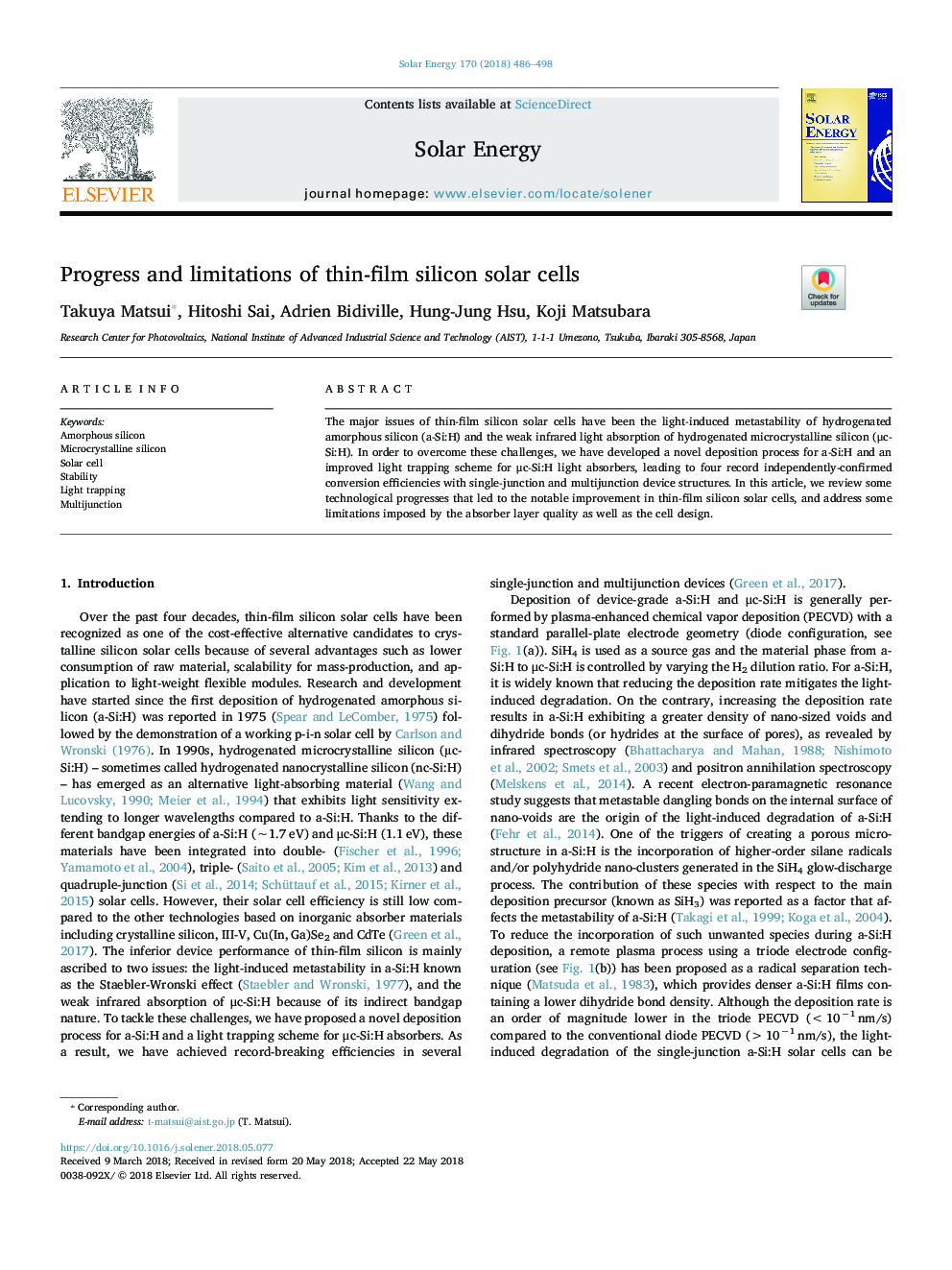| Article ID | Journal | Published Year | Pages | File Type |
|---|---|---|---|---|
| 7935082 | Solar Energy | 2018 | 13 Pages |
Abstract
The major issues of thin-film silicon solar cells have been the light-induced metastability of hydrogenated amorphous silicon (a-Si:H) and the weak infrared light absorption of hydrogenated microcrystalline silicon (μc-Si:H). In order to overcome these challenges, we have developed a novel deposition process for a-Si:H and an improved light trapping scheme for μc-Si:H light absorbers, leading to four record independently-confirmed conversion efficiencies with single-junction and multijunction device structures. In this article, we review some technological progresses that led to the notable improvement in thin-film silicon solar cells, and address some limitations imposed by the absorber layer quality as well as the cell design.
Related Topics
Physical Sciences and Engineering
Energy
Renewable Energy, Sustainability and the Environment
Authors
Takuya Matsui, Hitoshi Sai, Adrien Bidiville, Hung-Jung Hsu, Koji Matsubara,
